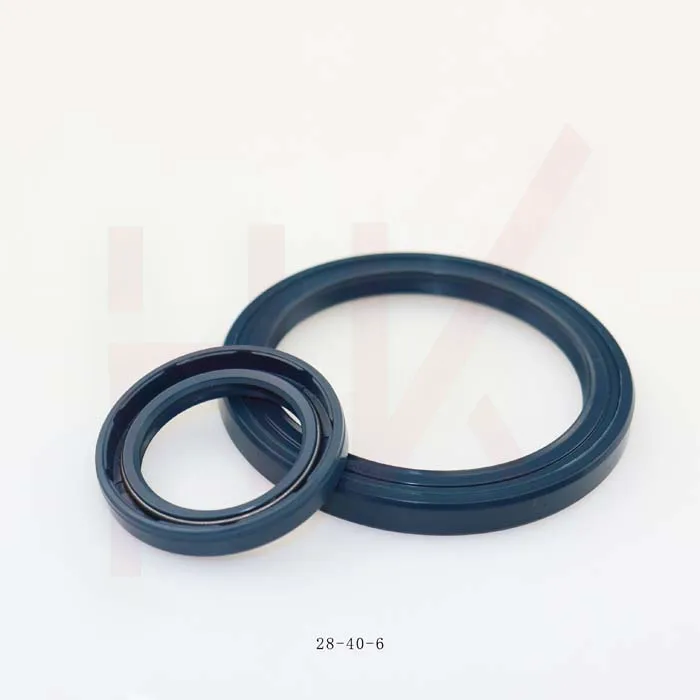8 月 . 09, 2024 05:00 Back to list
Understanding the Functionality and Applications of Radial Oil Seals in Industrial Machinery
Understanding Radial Oil Seals Importance, Functionality, and Applications
Radial oil seals, often referred to as radial lip seals, play a crucial role in a wide range of mechanical applications. They serve as barriers that prevent the leakage of lubricants while keeping contaminants such as dirt and moisture from entering the machinery. Typically made from elastomers, these seals are designed to accommodate a rotating shaft and function effectively under various pressures and temperatures.
Structure and Composition
The basic structure of a radial oil seal consists of a flexible sealing lip that contacts the shaft. This lip is designed to create a tight seal, utilizing dynamic contact pressure generated by the shaft's rotation. The body of the seal is usually made of materials such as neoprene, nitrile rubber, or fluorocarbon, which offer excellent resistance to oil and other lubricants. Additionally, many radial oil seals incorporate a steel casing that not only provides structural support but also enhances the seal's durability.
How Radial Oil Seals Work
At its core, a radial oil seal operates based on the principles of hydraulic sealing
. When installed, the elastic lip of the seal is compressed against the surface of the rotating shaft. This compression creates a barrier that traps the lubricant and prevents it from leaking out. Simultaneously, the seal keeps external contaminants at bay, ensuring the internal components of the machinery remain clean and well-lubricated.radial oil seal

As the shaft rotates, the sealing lip experiences friction; thus, the choice of materials is critical. High-quality materials not only withstand heat generated by friction but also resist wear and aging caused by exposure to various lubricants. Moreover, radial oil seals can be designed with additional features such as anti-extrusion rings and dust lips to enhance their performance further.
Importance in Various Industries
Radial oil seals are indispensable in numerous industries, including automotive, aerospace, manufacturing, and oil and gas. They are commonly used in engines, gearboxes, pumps, and compressors, where preventing lubricant loss is vital for both efficiency and longevity. In the automotive sector, for instance, radial oil seals are essential in preventing engine oil leaks, which, if unaddressed, could lead to severe mechanical failures.
In the manufacturing industry, radial oil seals play a significant role in ensuring the reliable operation of various machinery. They help minimize downtime caused by leaks or contamination, ultimately improving productivity. Furthermore, in the oil and gas sector, where environments can be particularly harsh, the reliability of seals becomes even more critical. Specially designed radial oil seals that can withstand extreme pressures and temperatures are employed to ensure operational safety and efficiency.
Conclusion
Radial oil seals may appear to be small and simple components, but their impact on mechanical efficiency and longevity cannot be overstated. By understanding their structure, functionality, and applications, businesses and engineers can make informed decisions about the type of seals needed for specific machinery. Proper selection and maintenance of radial oil seals can lead to enhanced performance, reduced maintenance costs, and prolonged equipment life, making them an essential element in any mechanical system. As technology continues to advance, the development of more efficient and robust sealing solutions will undoubtedly contribute to the ongoing optimization of various industrial processes.
-
The Power of Advanced Sealing: High-Pressure Solutions for Modern Machinery
NewsOct.29,2024
-
Optimizing Machinery with High-Performance Oil Seals
NewsOct.29,2024
-
Maximizing Machinery Efficiency with Advanced Oil Seals
NewsOct.29,2024
-
Ensuring Equipment Longevity with Quality Oil Seals
NewsOct.29,2024
-
Enhance Equipment Performance with Quality Oil Seals
NewsOct.29,2024
-
Custom Oil Seals for Specialized Machinery Needs
NewsOct.29,2024
-
The Role of Wiper Seals in Dust Sealing and Oil Protection
NewsOct.20,2024
Products categories
















